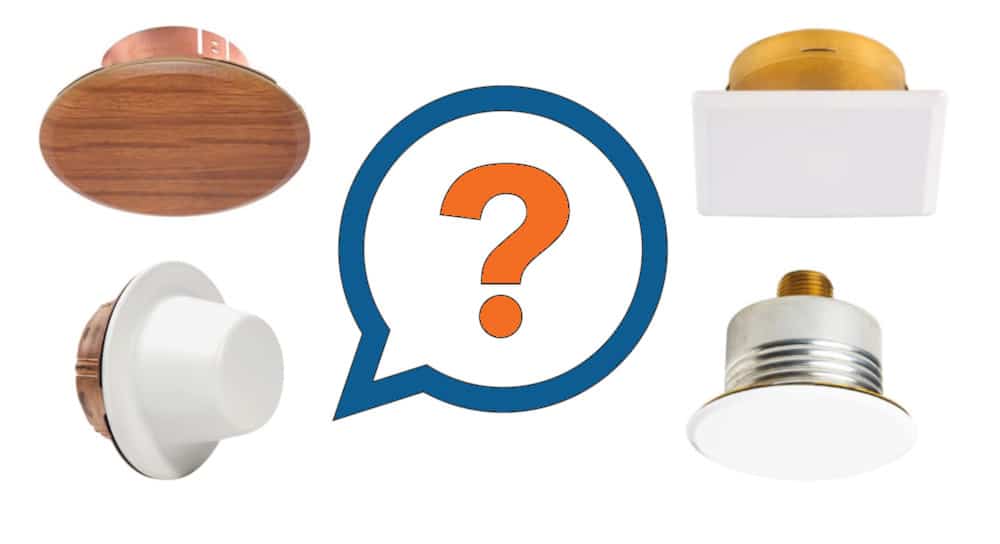How to choose the concealed sprinkler cover plate you need if there’s more than one option
If you know the sprinkler identification number (SIN) of a concealed fire sprinkler, typically found on its deflector, it’s pretty simple to find matching cover plates. The SIN plus the sprinkler’s activation temperature match up with the covers specifically compatible with the concealed sprinkler. But for some SINs, it still might leave you with a few choices.
Certain concealed sprinkler heads have only one compatible cover that comes in different temperatures roughly 20F (6.7C) lower than the corresponding activation temperature for the head. But manufacturers can offer different variations for others.
This article explains common cover plate features and their purpose, helping you choose the right part for your application.
Specifically, we highlight five possible variations that you might encounter, depending on your sprinkler and its compatible covers:
- Cover plate diameter and shape
- The protrusion and adjustment size of Reliable domed cover plates (plus adjustment ranges of other covers)
- Slots or no slots on some Reliable domed covers
- Attachment style (threaded, push-on/pull-off, or a combination)
- Covers for special applications
If you already know what cover you’re looking for, shop our catalog of Viking, Victaulic, Tyco, Reliable, and Senju cover plates, plus installation tools.
Possible variation 1: cover plate diameter and shape
Cover plates for concealed fire sprinklers come in a few different diameters (though most are 2-3/4” or 3 1/8”), as well as three different shapes (though most are flat circles). If a manufacturer offers multiple size options for your sprinkler, simply make sure a plate’s diameter and look match the ones you’re replacing and/or conceals the hole around the sprinkler.
When concealed fire sprinklers are placed in ceilings or walls, installers cut a hole to accommodate the cup that holds the sprinkler head. These holes are always bigger than the sprinklers to some degree or other, so you need a cover plate that makes up for the difference and leaves a clean finish.
To find the right replacement cover plate among multiple size options, measure the hole or the diameter of another existing cover in your system. Then, pick an option that’s compatible with your sprinkler and matches the old plate, ensuring it covers the gap.
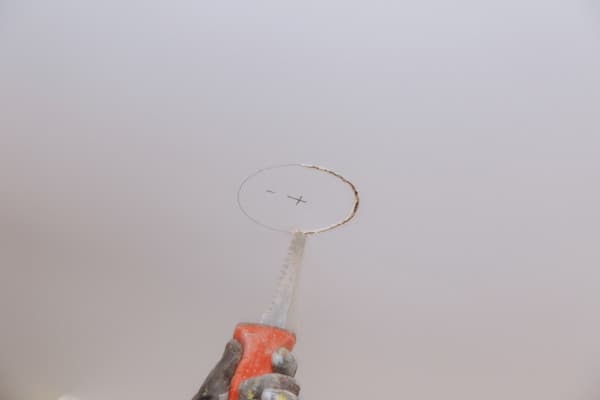
Let’s review a few size options offered by major manufacturers. Overall, Viking offers 2 3/4”, 3 1/8”, and 3 5/16″ diameters. But not all of Viking’s concealed sprinklers have all these possibilities. For example, a VK4621 XT1 concealed pendent has two possible cover sizes of 2 3/4” or 3 5/16”. But a Viking VK469 ELO concealed pendent only has one compatible 3 5/16” cover.
Senju and Tyco offer a similar range, with specific sprinklers having more cover options than others. Overall, Victaulic’s plates start at 2-3/4″ and go up to 4-1/2″ (though this very large size is specifically for seismic applications—more on that later). On the other hand, Reliable offers only one relatively large cover size for its concealed sprinklers: 3-5/16”.
Another possible variable to consider is the shape. Most cover plates are flat and circular, but Viking and Senju offer flat square options for some sprinklers. In addition, some sprinklers have domed circular cover plates that protrude from the ceiling or wall instead of flat models, which we’ll explain below. However, these domed (vs. flat) covers are often the only option for the sprinklers they match.
In any case, choose the shape and look you like if the manufacturer gives you a choice!
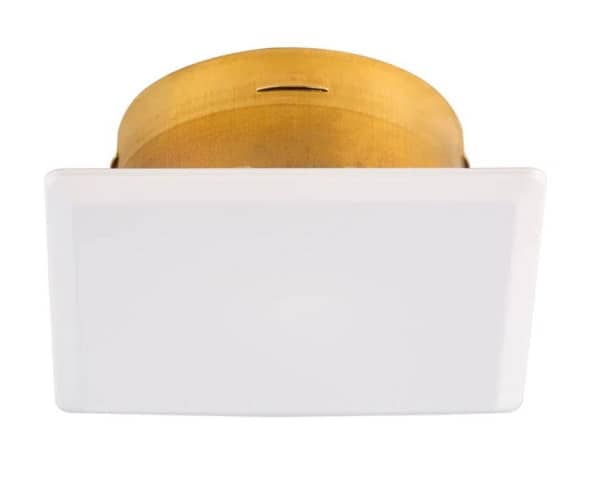
Possible variation #2: the dome and adjustment sizes of Reliable CCP domed cover plates (plus adjustment ranges of other covers)
Domed cover plates provide a different look from their flat counterparts and can also serve a couple of handy installation purposes.
A snug, clean fit and look are the goals of concealed sprinklers. But some heads may protrude from or sink farther into the ceiling or wall a little bit because of variations in surface height and the position of the supply pipe. Concealed sprinklers with domed cover plates have a little more room for heads that protrude than flat covers, in addition to their unique look. And some cover plates — domed and flat — also have a slight adjustment range to accommodate the depth of recessed sprinkler installations.
Reliable CCP dome-shaped cover plates come in two dome sizes that differ in how far they protrude from the ceiling or wall and how much adjustment they provide. The CCP cover with a larger dome offers 1/2” of adjustment to accommodate a concealed sprinkler’s position, while the smaller dome has 5/16” of adjustment.
When selecting a replacement Reliable CCP domed cover plate, choose the adjustment and dome size you have on the covers of existing sprinklers.
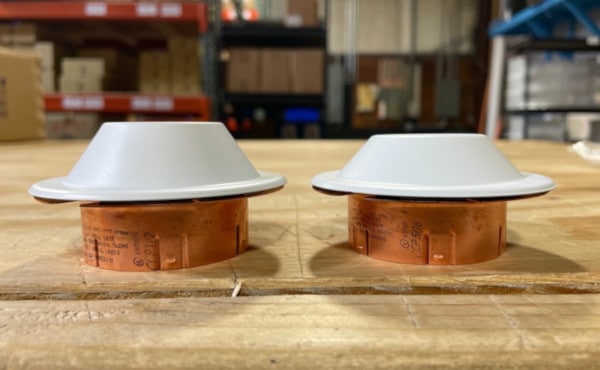
Other domed cover plates from other manufacturers only come in one dome size but still have a bit of adjustment based on how they attach to the sprinkler assembly. And many flat cover plates from various manufacturers can also be adjusted based on their attachments. This flexibility lets you fit the cover plate well when a sprinkler and cup are recessed into a ceiling or wall.
Such covers adjust once they are attached to the sprinkler assembly. They can be pushed all the way into the cup or subsequently twisted or pulled outward up to a small distance specified in the sprinkler’s data sheet (1/2” is common, but 1” is also sometimes seen).
Threaded cover plates give you fine control over depth based on screwing them outward. However, some push-on/pull-off covers (like those for the RFIII-model sprinklers from Tyco) also have a slight adjustment ability.
Most concealed sprinklers have covers with one range of adjustment, however, so you don’t have to choose between two different models compatible with one head. Reliable CCP plates, with two different dome sizes and adjustment levels, are an exception.
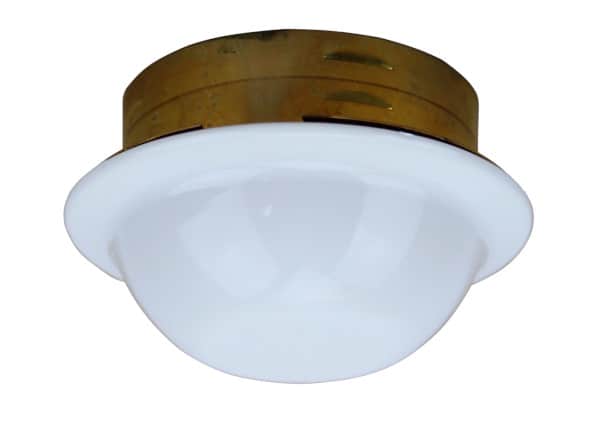
Possible variation #3: slots or no slots on Reliable domed cover plates
A Reliable horizontal sidewall concealed sprinkler might require slotted cover plates to function properly. These cover plates are designated “SWC-2” to distinguish them from the “SWC” non-slotted plates that are otherwise identical.
Specifically, the Reliable R3531 residential horizontal sidewall sprinkler requires the slotted SWC-2 cover plate when it’s rated at a 175F (79C) activation temperature. In contrast, R3531 sprinklers at 155F (68C) need the SWC cover plates without slots, as do other Reliable sidewalls that use SWC plates and don’t have 175C activation temperatures.
So, to ensure you’re getting the right cover, just replace the one you have/had and/or check the sprinkler’s SIN, temperature, and datasheet. If the current domed plates have slots, the replacements should as well!
As of this writing, the R3531 is the only concealed sidewall sprinkler that offers a 175F (79C) activation temperature and uses SWC-2 slotted covers, according to Reliable’s published data sheets.
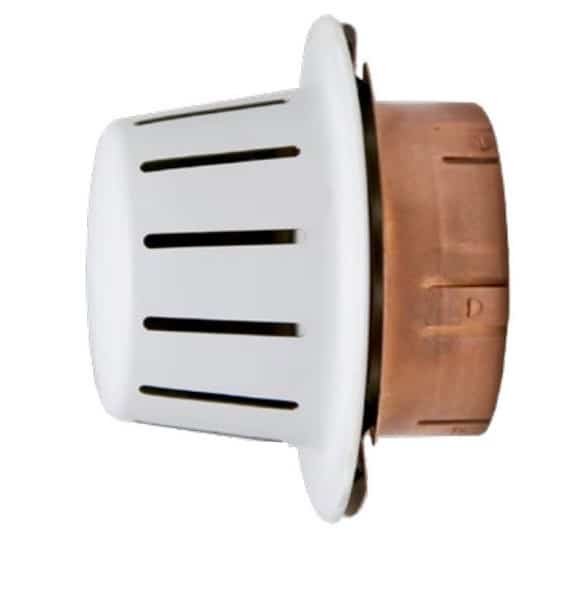
Possible variation #4: Cover plate attachment style/installation method
The attachment style of a cover refers to how the plate installs on the rest of the sprinkler assembly. The deflector of a concealed sprinkler is contained within a metal cup. The cover plate attaches to the cup and caps the opening, but how some covers attach can differ.
The “classic” method is just to push them on and (gently) pull them off, sometimes with a slight twist. With push-on/pull-off cover plates, raised tabs hold them in place. However, there are other options and slight variations.
Viking has a (relatively) new line of thread-on cover plates sold as an option alongside push-on covers for Mirage, Freedom, and XT1 concealed sprinklers. Both types will fit the same compatible sprinklers. As the name suggests, threaded plates screw into place, needing a quarter turn to complete installation. They offer a more secure fit for sprinklers in earthquake-prone areas or buildings otherwise exposed to vibration.
Reliable provides a similar option for most of its covers (except the RFS and G6 models), letting you choose between push-on/thread-off or thread-on/thread-off. Senju plates can be connected by either method but are always thread-off. Many of Tyco’s concealed sprinklers (RFII, RFII-MRI, Illusion, and ELOH) use thread-on plates, though some (RFIII and ELO-Illusion) use push-on plates.
Confusing? Don’t worry about it too much!
In many cases, you won’t have an option among the covers compatible with your sprinkler—the attachment method is the attachment method. But when you do have a choice, simply pick the fit you prefer or that’s appropriate, given any concerns about vibration (such as in seismic design areas).
This video from Viking demonstrates how its thread-on cover plates work:
Special applications for cover plates
While most concealed sprinklers and covers are intended for general residential or commercial use, some special applications exist. These covers are used in high-tech or seismic environments that require special features. The three big examples are:
- Cover plates specifically listed for seismic applications
- Plates designed for cleanroom use
- Plates listed for use around MRI machines
Seismic applications
Seismic design aims to prevent damage to fire protection infrastructure during an earthquake. It’s only necessary for systems in buildings assigned a specific seismic design category (SDC) based on location. And some concealed sprinkler cover plates are tested and listed for seismic applications.
These plates tend to be larger, such as the 4-1/2″ seismic cover plate option for Victaulic’s V5653 sprinklers (vs. the standard 3-5/16”). A larger design may help prevent covers from dislodging, and it accommodates more “annular space” (larger holes) that gives the sprinkler assembly room to move without hitting anything during an earthquake.
Cleanroom covers and gaskets
In specific scientific, medical, and manufacturing applications, cleanliness is crucial. Hyperclean environments are designed to eliminate any source of dust, dirt, or pathogens. And because dust tends to accumulate on fire sprinklers, cleanrooms often use concealed sprinklers with special silicone gaskets.
The gaskets prevent dust, etc., from accumulating inside the sprinkler assembly. And the flat, smooth surface of concealed sprinklers with cover plates makes cleaning the outside easy.
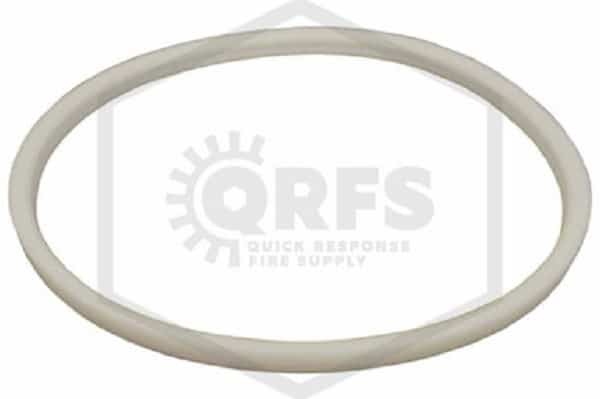
Different manufacturers have different takes on this technology. Tyco, for instance, sells silicone gaskets separately, providing separate gaskets for its RFII standard sprinklers and extended coverage concealed sprinklers. In contrast, Viking makes cover plates with integrated gaskets for their concealed sprinkler cover plates, while Victaulic offers both gaskets and integrated covers.
You should be aware that using cleanroom gaskets can change the response time designation of a sprinkler. For example, Victaulic’s V8302 is a quick-response concealed sprinkler that must be treated as a standard response model when using a clean room gasket. The implication here is that the gasket’s airtight seal affects the sprinkler’s response time index (RTI).
Qualified designers of systems that include coverage of cleanroom areas account for these differences in response type. So, replacing what you have is the standard move. But check with a fire protection professional if you have any questions.
MRI sprinklers
Healthcare facilities with magnetic resonance imaging machines require particular architecture, including fire sprinklers. MRIs use high-powered magnets that can affect any ferrous (iron-containing) metal around them.
Concealed sprinklers and cover plates approved for MRI rooms are non-ferrous and will not be affected by the magnets. If you’re replacing a cover plate in these spaces, using an MRI-approved model is essential. Tyco, Viking, and Reliable all have MRI-safe sprinklers and cover plates.
Choose the right fire sprinkler cover plate for the job
Cover plates for concealed sprinklers are both pretty and functional. They keep sprinklers out of the way, provide smooth surfaces on sprinklered ceilings and walls, and just make installations look better.
Choosing replacement cover plates is usually pretty easy—based on the concealed sprinkler’s SIN, you’ll usually only have one to a few options. From there, simply:
- Pick the size that matches existing covers and/or conceals the size of the hole, if multiple sizes are available
- Choose the shape you like best if there are options
- Make sure you pick Reliable covers with the right dome size and range of adjustment if there are options
- Pick slotted cover plates for Reliable R3531 residential concealed horizontal sidewalls with a 175F (79C) activation temperature
- Pick threaded, push-on/off, or push-on/thread-off attachments if there are options and according to whether you need a more secure fit
- Consider whether you have special applications: listed seismic covers, covers with gaskets or separately sold gaskets for cleanrooms, and MRI-safe sprinklers and covers
Let QRFS be your partner in your next installation or repair. Check out our inventory of cover plates and plate installation tools. If you don’t see the right cover, finish, or feature for your job, contact us, and we’ll provide a quote for special orders.
This blog was originally posted at QRFS.com/blog. If this article helped you, check us out at Facebook.com/QuickResponseFireSupply or Twitter @QuickResponseFS.


